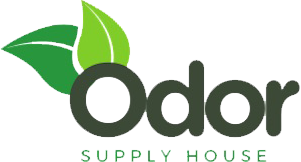
Hydroxyl Radicals, Mold, and Mycotoxins
Share
When PCO and AOP Technologies Make Sense
Indoor mold and the mycotoxins it produces are more than just nuisances—they can threaten both building materials and human health. The first line of defense is simple but powerful: filter the air with a true HEPA and activated carbon purifier. This captures airborne mold spores, dust, and odors without adding byproducts into the air you breathe.
But what about the air purifiers that advertise UV lights, ionizers, or photocatalytic oxidation (PCO)? For everyday use, these “additives” are not recommended. However, during professional mold remediation, advanced oxidation technologies such as PCO and AOP (Advanced Oxidation Processes) may be used as supplemental tools. Let’s break down what they are, how they work, and when they make sense.
Why Filtration Should Come First
For daily air cleaning, the safest choice is a purifier that relies only on mechanical filtration:
- HEPA filters remove 99.97% of particles down to 0.3 microns, including mold spores.
- Activated carbon filters trap odors, VOCs, and some airborne chemicals.
Technologies like ionizers, UV lamps, and consumer-grade PCO claim to “destroy” pollutants, but in practice they often fall short—or worse, create byproducts:
- Ionizers may generate ozone, a lung irritant.
- UV lights in small purifiers typically aren’t strong enough to deactivate mold spores.
- Consumer PCO devices produce very low levels of hydroxyl radicals, not enough to treat active mold problems.
This is why experts recommend filtering without additives for everyday indoor air quality.
When PCO and AOP Technologies Are Useful
Although not meant for daily home use, PCO and AOP systems can help during remediation. These technologies generate hydroxyl radicals and other oxidizers that aggressively attack airborne mold spores, bacteria, odors, VOCs, and even some mycotoxins.
- PCO is sometimes used in portable hydroxyl generators.
- AOP is more often deployed in large-scale remediation projects or HVAC-integrated systems.
Both work best as supplements to physical cleaning and filtration, not replacements.
How PCO (Photocatalytic Oxidation) Works
PCO uses a UV light and a catalyst (commonly titanium dioxide) to create hydroxyl radicals. These radicals interact with pollutants, breaking them down into carbon dioxide and water.
Pros of PCO:
- Can reduce odors, VOCs, and airborne spores.
- Safe to run in occupied spaces at controlled levels.
- Leaves no chemical residue.
Cons of PCO:
- Slower than stronger oxidation methods.
- Limited effectiveness on surfaces and certain mycotoxins.
- Consumer versions are too weak for remediation use.
How AOP (Advanced Oxidation Processes) Work
AOP combines UV light, hydrogen peroxide, ozone (in some systems), and catalysts to produce a mix of oxidizers. This chemical “team” is faster and more aggressive than PCO alone.
Pros of AOP:
- More powerful and effective across a broader range of pollutants.
- Can address mold spores, VOCs, bacteria, and some mycotoxins.
- Often integrated into HVAC for whole-building treatment.
Cons of AOP:
- Some systems generate ozone, which must be carefully monitored.
- Not safe for continuous use in occupied spaces at high levels.
- Requires professional installation and oversight.
- Higher cost than consumer-grade devices.
PCO vs. AOP: A Comparison
| Feature | PCO | AOP |
|---|---|---|
| Oxidizers Produced | Hydroxyl radicals | Hydroxyls, ozone, peroxides, superoxides |
| Strength | Moderate | High |
| Best Use | Supplemental, safe in occupied spaces | Professional remediation, unoccupied treatment |
| Speed | Slower | Faster |
| Consumer vs. Pro | Consumer-grade versions exist, but limited | Professional use only |
| Impact on Mycotoxins | Partial | Stronger, though not complete |
Consumer vs. Professional Use
Consumer air purifiers: Best when focused only on HEPA and carbon filtration. Units that add UV, ionizers, or weak PCO technology don’t offer significant benefits and may create harmful byproducts.
Professional remediation: In mold removal projects, experts may introduce PCO or AOP systems to reduce airborne contaminants. PCO can run safely in occupied areas, while AOP is typically reserved for unoccupied treatments due to its intensity.
Final Thoughts
For everyday air quality, the safest option is clear: filter the air without additives. Rely on HEPA and carbon filters, and avoid purifiers that use UV, ionizers, or consumer-level PCO as their main selling points.
During active remediation, however, professionals may deploy PCO or AOP technologies. These oxidation systems don’t replace cleaning and filtration but can complement them by reducing airborne mold spores, VOCs, odors, and even some mycotoxins.
Used correctly and in the right context, PCO and AOP can enhance remediation results—helping restore healthier indoor environments after mold problems are addressed at their source.
#MoldRemediation #IndoorAirQuality #AirPurifiers #Mycotoxins #PCOTechnology #AOPSystems #HydroxylRadicals #HealthyAir
